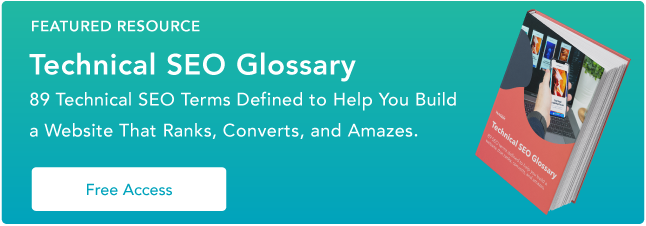Best URL Practices for SEO: How to Optimize URLs for Search

Back when I started playing the search engine optimization (SEO) game, keyword stuffing actually worked. Since then, algorithm updates have spared only a few SEO best practices, like URL optimization.
Google’s algorithm updates have shaken up the scenery of SEO. However, URL optimization has stood the test of time. This is an essential element of on-page SEO that every content marketer should know.
To get you up to speed, I’ll share the ABCs of URL optimization and up-to-date best practices. I’ll also share tips I’ve learned from experts.
Table of Contents
A typical URL consists of several parts: Protocol, subdomain, domain, subdirectory, and slug. A protocol can be HTTP or HTTPS — the latter signaling an encrypted connection. A subdomain is usually “www.” (World Wide Web), but custom subdomains like “shop.” and “blog.” aren’t uncommon.
Afterward, there’s the domain name, which consists of a top-level domain like “.com” and a second-level domain, which is usually a brand or project name.
The aforementioned parts will help you reach a home page. From there, you’ll likely go to a subdirectory — a folder inside the main website — and a slug, which identifies singular pages.
URL Example
Consider the following URL: https://blog.hubspot.com/marketing/url-best-practices-for-seo. It has the following parts:
- Protocol: HTTPS://
- Subdomain: blog.
- SLD: hubspot
- TLD: .com
- Subdirectory: /marketing
- Slug: /url-best-practices-for-seo
From this URL, I can tell that I’m on a blog about URL basics. It’s published by HubSpot and hosted using an encrypted connection.
These perks are only possible if we use SEO best practices for URLs. Let’s dig further into the reasons why good URLs are so impactful.
Ranking Factor
URLs are on Google’s confirmed search ranking factors, which help search engines decipher what each webpage contains. With that in mind, I add relevant keywords to my URLs to help Google understand my pages’ content, why I made it, and which searches it should rank for.
User Experience
Keyword stuffing is a thing of the past. SEO is now a delicate dance of pleasing both algorithms and flesh-and-blood readers. I now aim for a descriptive URL so users know what to expect from the page.
If someone sends my URL in a direct message, will the recipient feel confident they’re clicking into a relevant and valuable page? Reaching this ideal gets me more backlinks and sales.
Accessible Links
If there’s one thing I hate about LinkedIn, it’s how it handles external URLs. You can’t hyperlink an anchor text. Instead, you must add a bare link, which often appears ugly if you use non-descriptive links — like https://www.example.com/post/p123/.

While I could use a link shortener …read more
Source:: HubSpot Blog

![→ Download Now: SEO Starter Pack [Free Kit]](https://no-cache.hubspot.com/cta/default/53/1d7211ac-7b1b-4405-b940-54b8acedb26e.png)








